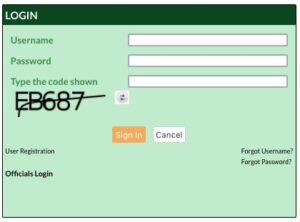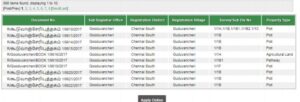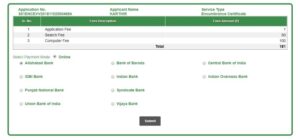How to Apply or Download Encumbrance Certificate (EC) in Tamil Nadu (TN)-2023
If you’re a property owner or looking to purchase a property in Tamil Nadu, one of the essential documents you need to have is an Encumbrance Certificate (EC). An EC is a legal document that shows the history of the property, including any transactions or financial liabilities associated with it. In this article, we’ll guide you on how to apply for an Encumbrance Certificate in Tamil Nadu and view it online.
What is an Encumbrance Certificate (EC)?
An Encumbrance Certificate (EC) is a document that certifies that a property is free from any financial or legal liabilities. It provides a clear title to the property and ensures that there are no mortgages, loans, or pending legal disputes associated with it. In Tamil Nadu, the Sub-Registrar’s Office issues the EC for a property.
Why do you need an Encumbrance Certificate?
If you’re a property owner, an Encumbrance Certificate is essential for selling, transferring, or mortgaging your property. It serves as proof that the property is free from any liabilities and ensures that the transaction is legal and transparent. If you’re a buyer, an EC helps you verify the property’s ownership and title and ensures that you’re investing in a legal and safe property.
How to apply for an Encumbrance Certificate in Tamil Nadu?
Applying for an Encumbrance Certificate in Tamil Nadu is a simple and straightforward process. Here’s how you can apply for an EC:
Step 1: Obtain the application form
The first step in applying for an EC is to obtain the application form. You can get the form from the nearest Sub-Registrar’s Office or download it online from the official website of the Tamil Nadu Government.
Step 2: Fill in the application form
Once you have the application form, fill it in with the required details, such as the property’s address, the purpose of the EC, and your personal information. Make sure to fill in the form correctly and completely, as any errors or discrepancies can delay the process.
Step 3: Submit the application form
After filling in the application form, submit it along with the required documents and fees to the Sub-Registrar’s Office. The required documents include proof of identity, proof of address, and a copy of the property’s sale deed. The fees for the EC vary depending on the property’s age and location.
Step 4: Collect the Encumbrance Certificate
After submitting the application form and fees, the Sub-Registrar’s Office will process your application and issue the Encumbrance Certificate. You can collect the EC from the Sub-Registrar’s Office or get it delivered to your registered address.
How to view the Encumbrance Certificate online?
In Tamil Nadu, you can view your Encumbrance Certificate online by following these simple steps:
Step 1: Visit the official website

Visit the official website of the Tamil Nadu Government’s Department of Registration and Stamp Revenue – https://tnreginet.gov.in/portal/.
Step 2: Select the EC option

On the homepage, select the ‘EC View’ option under the ‘Services’ tab.
Step 3: Fill in the required details
Fill in the required details, such as the district, zone, and sub-zone of the property, survey number, and document number.

Step 4: Verify the details
After filling in the required details, verify them and click on the ‘Search’ button.
Step 5: View the Encumbrance Certificate

Once you click on the ‘Search’ button, you’ll be able to view your Encumbrance Certificate online. You can take a printout of the EC for your records or use it for any legal or financial transactions related to the property.
To obtain an offline Encumbrance Certificate (EC) or Villangam Encumbrance Certificate in Tamil Nadu
Step 1: Visit the Sub-Registrar’s Office
You can visit the nearest Sub-Registrar’s Office to obtain an offline EC or Villangam EC. Make sure to carry all the required documents, such as proof of identity, proof of address, and a copy of the property’s sale deed.
Step 2: Fill in the application form
Once you reach the Sub-Registrar’s Office, fill in the application form for the EC. The application form requires details such as the property’s address, purpose of the EC, and your personal information.
Step 3: Submit the application form
After filling in the application form, submit it along with the required documents and fees to the Sub-Registrar’s Office. The fees for an offline EC or Villangam EC vary depending on the property’s age and location.
Step 4: Collect the Encumbrance Certificate
After submitting the application form and fees, the Sub-Registrar’s Office will process your application and issue the EC. You can collect the EC from the Sub-Registrar’s Office or get it delivered to your registered address.
It’s essential to note that obtaining an offline EC or Villangam EC may take some time as it involves physical verification and processing. However, it’s a valid and legal document that you can use for any legal or financial transactions related to the property.
Conclusion
An Encumbrance Certificate is a vital document for any property owner or buyer in Tamil Nadu. It provides a clear title to the property and ensures that there are no financial or legal liabilities associated with it. Applying for an EC is a simple process, and you can also view it online through the official website of the Tamil Nadu Government’s Department of Registration and Stamp Revenue. By following the steps mentioned above, you can easily apply for an Encumbrance Certificate in Tamil Nadu and view it online.
Obtaining an offline EC or Villangam EC in Tamil Nadu involves visiting the Sub-Registrar’s Office, filling in the application form, submitting the required documents and fees, and collecting the EC. It’s a valid and legal document that provides a clear title to the property and ensures that there are no financial or legal liabilities associated with it.
